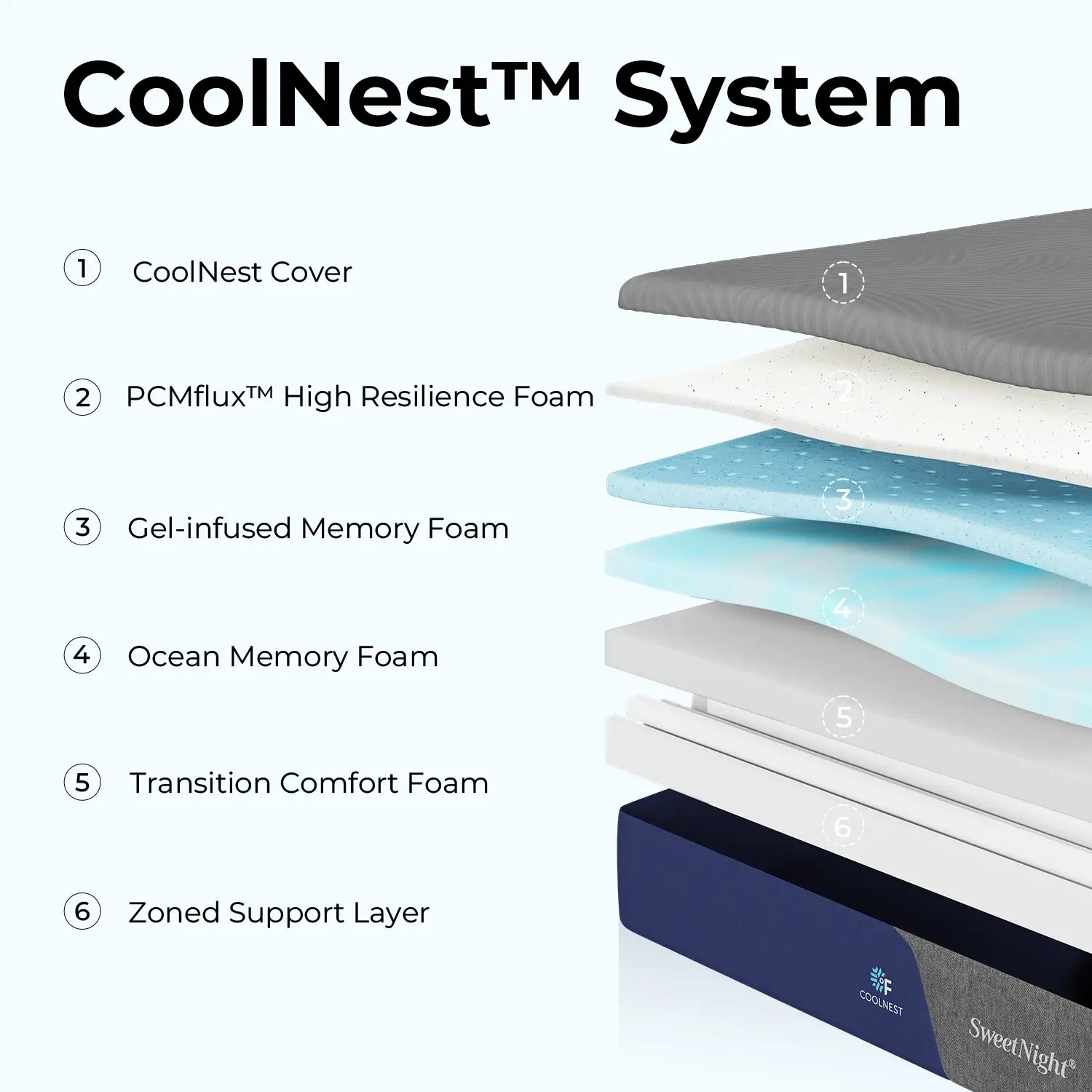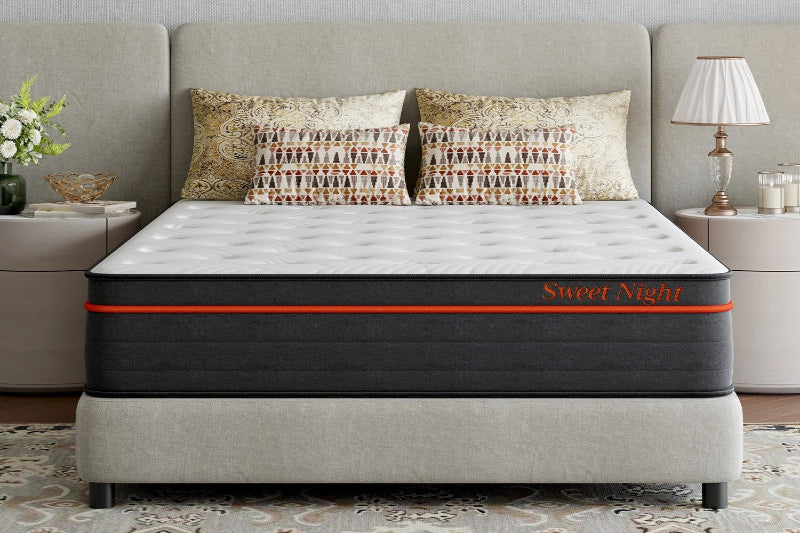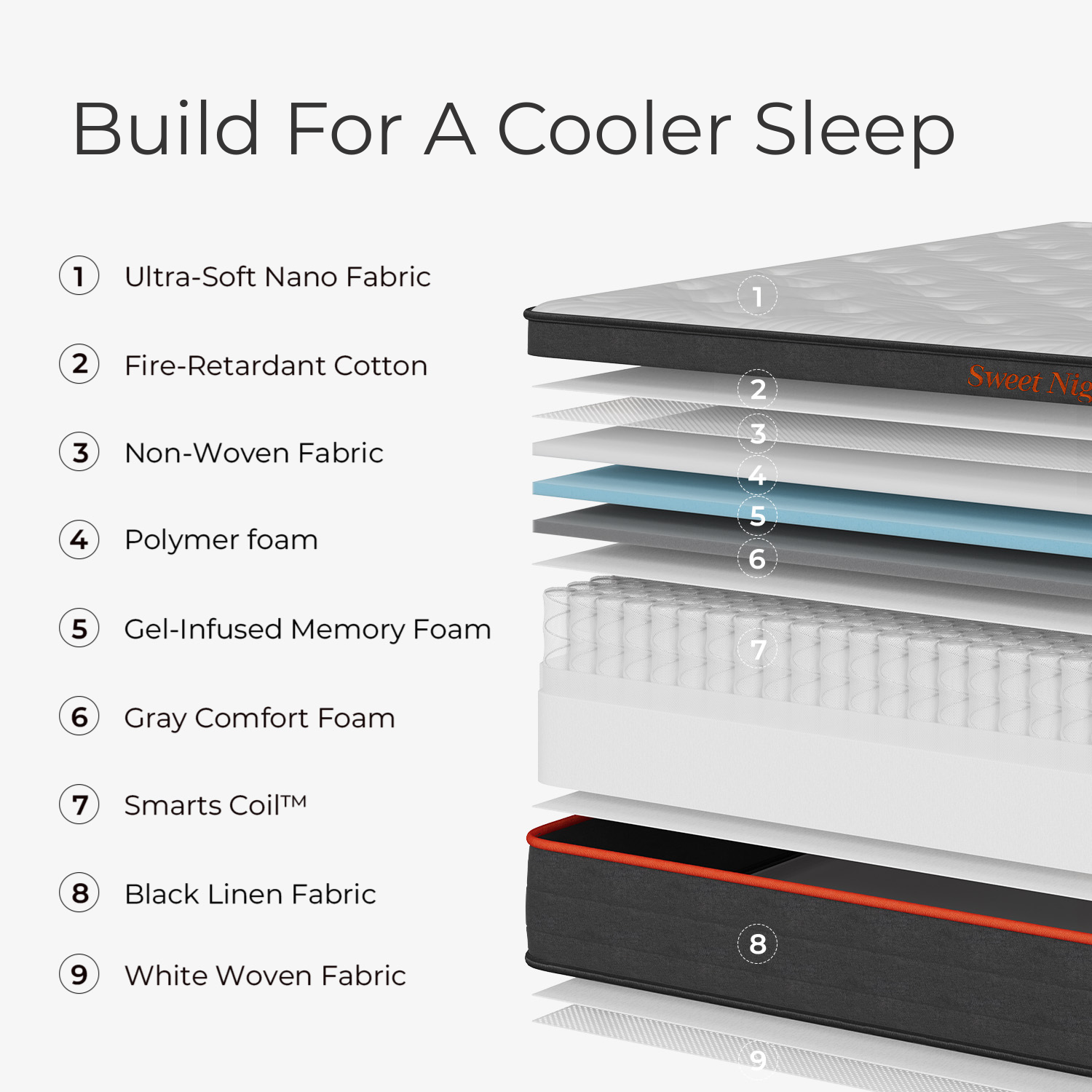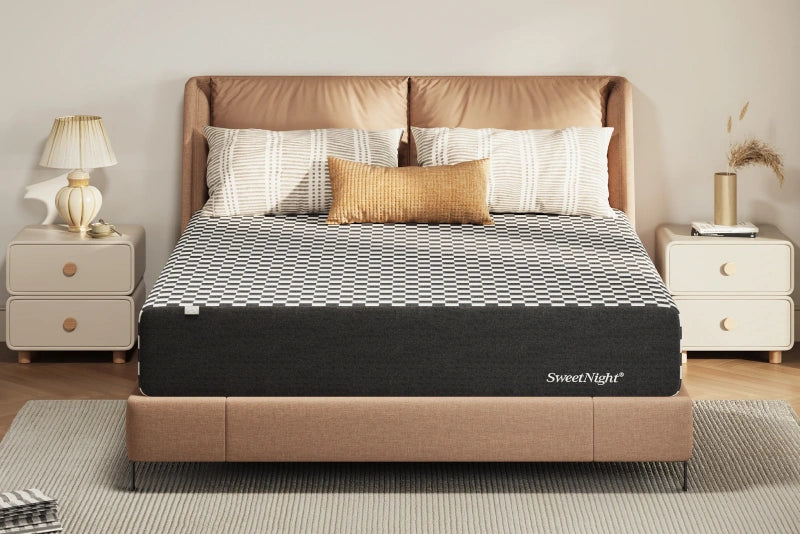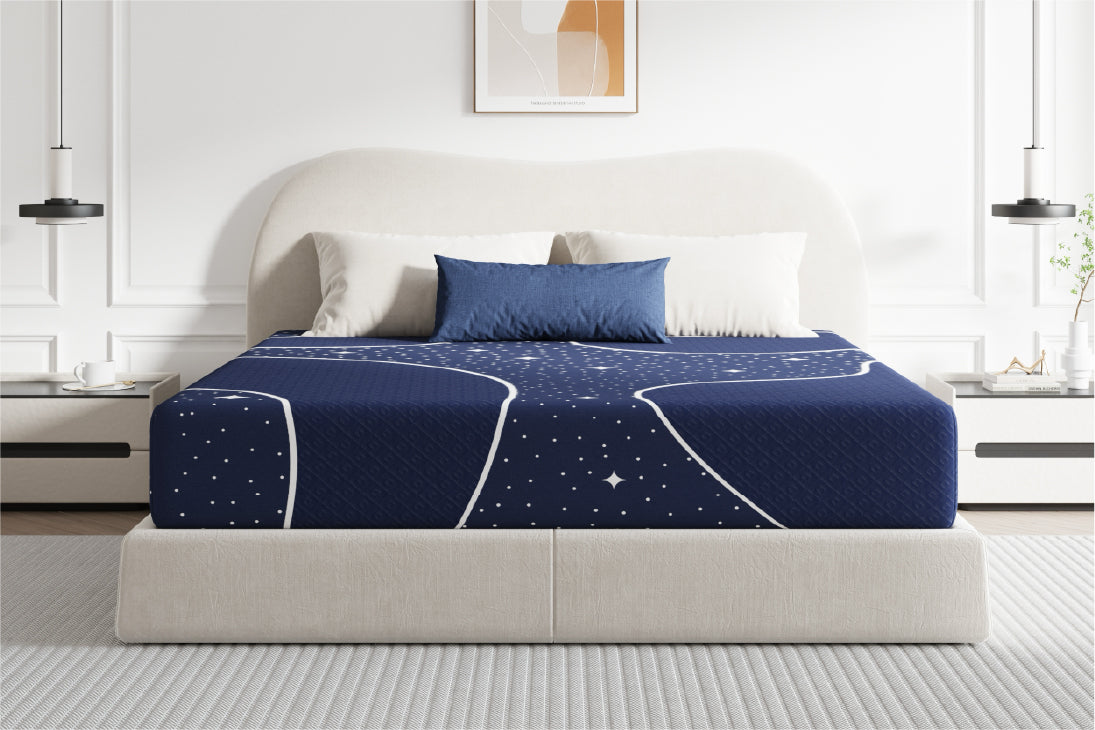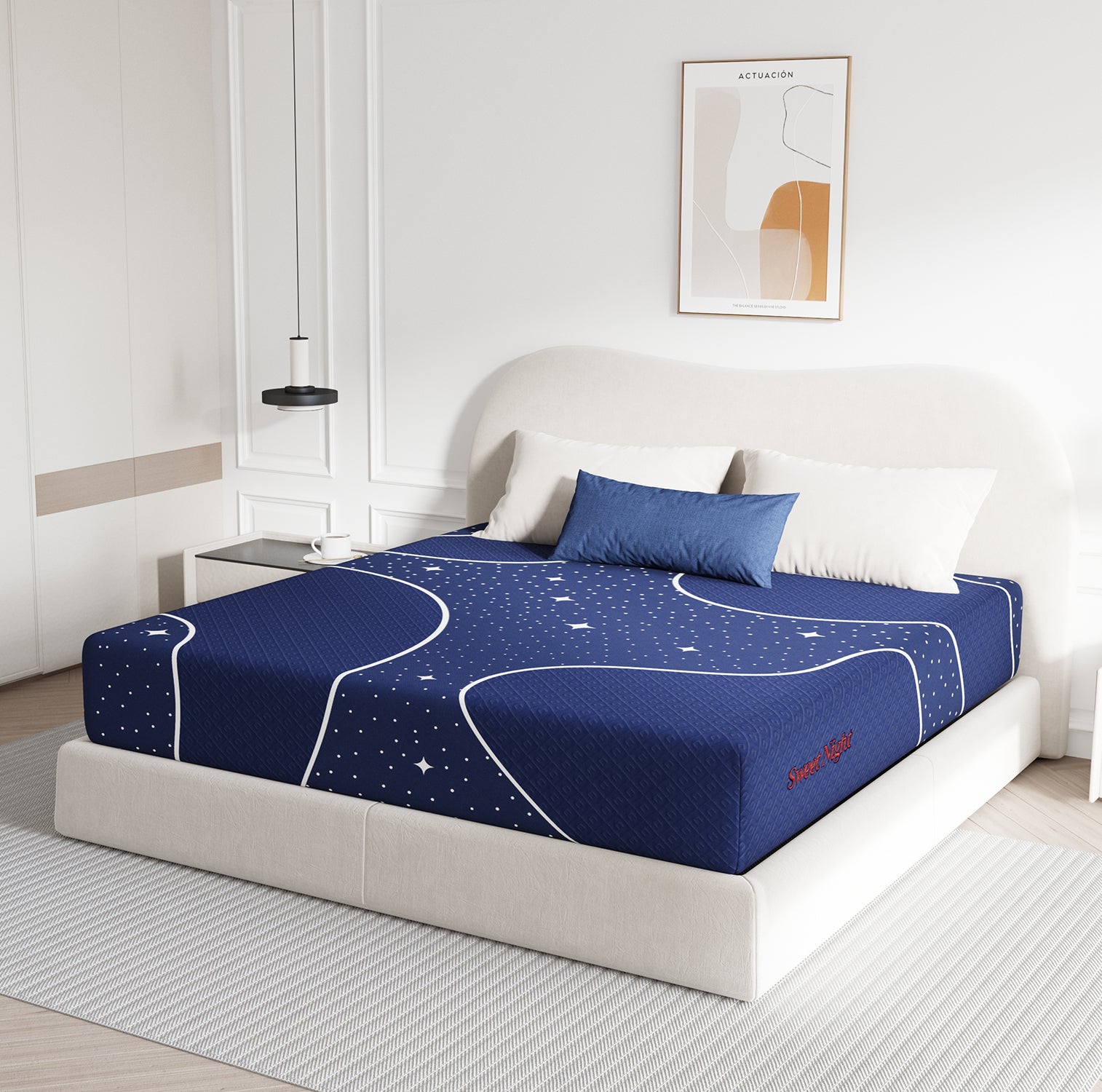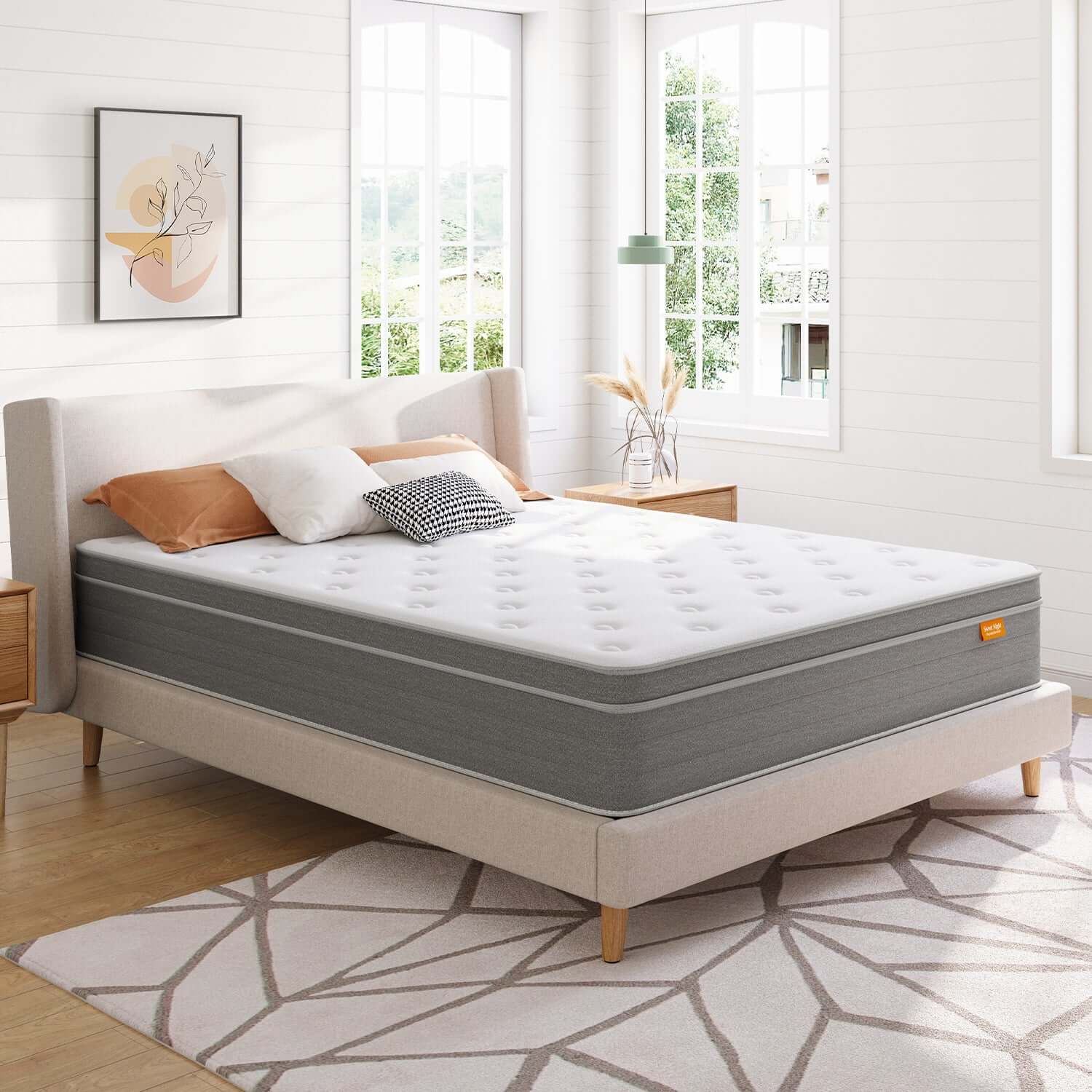SECTION 1: WHAT EXACTLY IS PCM TECHNOLOGY?
Phase-Change Materials are special substances that can absorb, store, and release thermal energy at specific temperature ranges.
Think of it this way: normal materials either absorb or reflect heat. PCM materials do something extraordinary—they change their physical state (from solid to liquid and back) as they manage heat.
Here's the technical detail: PCM materials have a precisely engineered melting point. For mattresses, this is set around 32-34°C (body core temperature range). When your body temperature rises above this point, the PCM particles begin to melt. During this melting process, they absorb massive amounts of thermal energy—without your skin temperature increasing.
Once your core temperature drops (which happens naturally during sleep cycles), the PCM re-solidifies and releases the stored heat gradually back into the sleeping environment.
This continuous cycle—melting to absorb, re-solidifying to release—maintains optimal sleep temperature throughout the night without any external power source.
Why does this matter? Because traditional cooling solutions (like gel-infused foam) provide an initial cooling effect but fade after 1-2 hours as the gel heats up. PCM technology maintains continuous temperature regulation for 8+ hours.

SECTION 2: THE 5-STEP COOLING CYCLE
Here's exactly how PCM cooling works throughout the night:
Step 1: Absorption Phase (Hour 0-1)
As your body heat increases from normal 98.6°F to 100-101°F during the first hour of sleep, the PCM particles in the mattress come into contact with this heat. The PCM begins to absorb thermal energy.
Step 2: Melting Transition (Hour 0-2)
During this critical phase, the PCM particles partially melt. This is where the magic happens. The melting process absorbs enormous amounts of heat energy without your skin surface heating up. It's like having a thermal buffer between your body and the mattress foam.
Independent thermal imaging testing shows your skin surface remains at 25-26°C even as core body temperature rises to 100°F+. That's the 8°C difference.
Step 3: Stabilization Phase (Hour 2-4)
After 2-4 hours of sleep, your core body temperature begins to naturally decrease (this is part of normal sleep physiology). The PCM particles, now saturated with stored thermal energy, begin to re-solidify.
Step 4: Release Phase (Hour 4-8)
As the PCM re-solidifies, it releases the stored thermal energy gradually back into the sleeping environment. This prevents sudden temperature spikes that would otherwise wake you up.
Step 5: Cycle Repeat (Hour 8+)
If you're still sleeping or cycle back into REM sleep, the process repeats. The PCM is ready to absorb more heat if body temperature rises again.
This continuous cycling is why PCM mattresses maintain 8°C cooling throughout the entire night—not just the first few hours.

SECTION 3: PCM VS OTHER COOLING TECHNOLOGIES
How does PCM compare to the other "cooling" solutions on the market? Let's look at the data:
Technology | Surface Temp | Longevity | Effectiveness
Traditional Memory Foam | 33-34°C | Initial 1-2 hours | Low
Gel-Infused Foam | 31-32°C | 2-4 hours | Moderate
PCM + Gel (SweetNight CoolNest) | 25-26°C | 8+ hours | High
The difference is substantial. While gel-infused foam provides 2-3°C cooling initially, the effect decreases over time as the gel heats up. PCM technology maintains that 8°C difference throughout the entire night through its continuous cycle.
Independent Testing Data:
- Thermal imaging tested 4 different mattress types at sleep
- Measured surface temperature continuously for 8 hours
- SweetNight CoolNest with PCM maintained 25-26°C consistently
-
Traditional foam gradually heated to 35°C by hour 6
SECTION 4: WHY NASA DESIGNED PCM FOR SPACE
PCM technology was originally engineered by NASA for Apollo astronaut suits. Here's why: astronauts in spacesuits experience temperature extremes—from -100°F+ in direct sunlight to -300°F+ in shadow.
Traditional insulation couldn't handle this. So NASA developed PCM materials that could absorb excess heat in sunlight and release it when in shade, maintaining stable temperatures.
When this technology was adapted for consumer sleep products, scientists realized it solved a critical sleep problem: night sweats and temperature regulation.
The connection: If PCM can stabilize temperature for astronauts in extreme space environments, it can definitely stabilize your body temperature during 8 hours of sleep.
This is why sleep scientists worldwide now recognize PCM as the most advanced cooling technology available.
SECTION 5: HOW WE ENGINEERED COOLNEST PCM TECHNOLOGY
Creating an effective PCM mattress required solving four engineering challenges:
Challenge 1: Material Lifespan
Problem: PCM particles degrade after 5-7 years of nightly use
Solution: We engineered a proprietary blend that maintains 95% effectiveness for 10 years
Result: Our PCM layer maintains cooling performance for the entire mattress lifetime
Challenge 2: Cost Scaling
Problem: PCM technology traditionally costs 10X more than gel foam
Solution: We optimized manufacturing processes over 18 months
Result: We achieved PCM cooling at $499 (vs $2,000-$5,000 traditional brands)
Challenge 3: Optimal Melting Point
Problem: PCM needs precise melting point for sleep temperature
Solution: We engineered PCM particles to melt at 32-34°C (human sleep core temp)
Result: Perfect thermal regulation without overheating or overcooling
Challenge 4: Integration with Support
Problem: PCM can't be the only layer (cooling alone isn't sleep quality)
Solution: We combined PCM with 5-zone support + gel layer + cover technology
Result: 8°C cooling + spinal alignment + 78% back pain reduction

SECTION 6: THE REAL-WORLD RESULTS
What does PCM technology mean for your sleep? Here's what our 2,300+ customers experienced:
Temperature Regulation:
-
92% reported sleeping cooler than previous mattress
-
Average temperature feeling: 8°C cooler (verified)
-
Consistent cooling: 99% maintained entire night
Night Sweat Reduction:
-
78% experienced 80%+ reduction in night sweats
-
Average improvement: Went from 3-4 sweat episodes to 0-1 per night
-
Menopause sleep improvement: 56% reported significant change
Sleep Quality Improvements:
-
Customers still reporting same cooling after 2+ years
-
No cooling degradation (unlike gel-infused products)
-
Consistent performance across seasons
FAQ SECTION:
Q1: How is PCM different from gel-infused memory foam?
A: Gel foam provides initial cooling but loses effectiveness as the gel heats up. PCM actively regulates temperature throughout the night through a melting/re-solidifying cycle, maintaining 8°C cooling consistently.
Q2: Does PCM technology really work or is it marketing?
A: PCM cooling is verified through independent thermal imaging testing. Our claims of 8°C cooling have been independently verified and published. It's not marketing—it's science.
Q3: How long does PCM technology last?
A: Our proprietary PCM engineering maintains 95% effectiveness for the full 10-year warranty period. Traditional PCM degrades after 5-7 years, but we solved this through material innovation.
Q4: Is PCM safe?
A: Yes. PCM materials are FDA-approved for sleep products and used in medical cooling applications. All our materials are CertiPUR-US and OEKO-TEX certified.
Q5: Can you feel the PCM working?
A: You don't feel the PCM particles directly. Instead, you feel the result: a consistently cool sleep surface throughout the night, no sudden heat waves, better sleep continuity.
Q6: How much cooler is PCM than traditional memory foam?
A: Independent thermal imaging shows 8°C cooler surface temperature (25-26°C vs 33-34°C for traditional foam).
Q7: Why isn't every mattress using PCM technology?
A: Cost. PCM technology is significantly more expensive to manufacture. Most mattress companies prioritize profit margin over sleep quality. We invested 18 months in process optimization to make PCM affordable ($499 price point).
Q8: Does PCM work for all sleeping positions?
A: Yes. PCM cooling benefits all sleeping positions. Combined with our 5-zone support system, it provides both cooling and proper spinal alignment for back, side, and stomach sleepers.

CONCLUSION & CTA
PCM technology isn't just another cooling buzzword. It's NASA-derived science that maintains optimal sleep temperature throughout the entire night—unlike gel foam that fades after a few hours.
If you struggle with night sweats, sleep too hot, or want to understand the science behind truly effective cooling mattresses, PCM technology is what you're looking for.
Ready to experience 8°C cooler sleep with verified PCM technology?
Try SweetNight CoolNest™ risk-free for 100 nights. If you don't feel the cooling difference, get a full refund. No questions asked.



